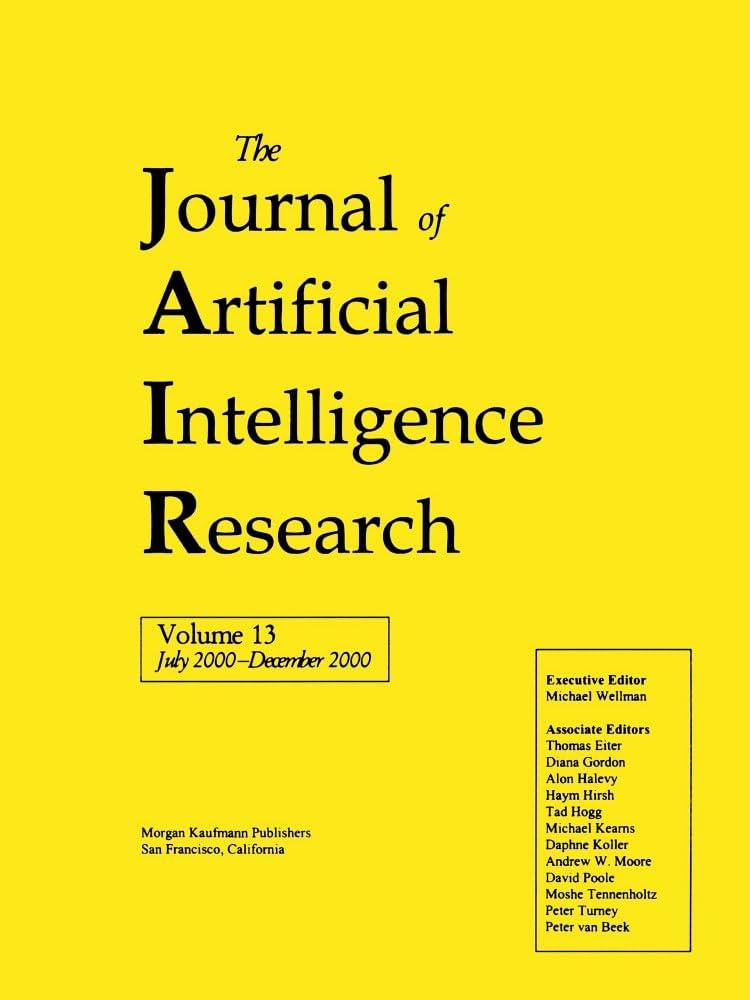Unifying SAT-Based Approaches to Maximum Satisfiability Solving
IF 4.5
3区 计算机科学
Q2 COMPUTER SCIENCE, ARTIFICIAL INTELLIGENCE
引用次数: 0
Abstract
Maximum satisfiability (MaxSAT), employing propositional logic as the declarative language of choice, has turned into a viable approach to solving NP-hard optimization problems arising from artificial intelligence and other real-world settings. A key contributing factor to the success of MaxSAT is the rise of increasingly effective exact solvers that are based on iterative calls to a Boolean satisfiability (SAT) solver. The three types of SAT-based MaxSAT solving approaches, each with its distinguishing features, implemented in current state-of-the-art MaxSAT solvers are the core-guided, the implicit hitting set (IHS), and the objective-bounding approaches. The objective-bounding approach is based on directly searching over the objective function range by iteratively querying a SAT solver if the MaxSAT instance at hand has a solution under different bounds on the objective. In contrast, both core-guided and IHS are so-called unsatisfiability-based approaches that employ a SAT solver as an unsatisfiable core extractor to determine sources of inconsistencies, but critically differ in how the found unsatisfiable cores are made use of towards finding a provably optimal solution. Furthermore, a variety of different algorithmic variants of the core-guided approach in particular have been proposed and implemented in solvers. It is well-acknowledged that each of the three approaches has its advantages and disadvantages, which is also witnessed by instance and problem-domain specific runtime performance differences (and at times similarities) of MaxSAT solvers implementing variants of the approaches. However, the questions of to what extent the approaches are fundamentally different and how the benefits of the individual methods could be combined in a single algorithmic approach are currently not fully understood. In this work, we approach these questions by developing UniMaxSAT, a general unifying algorithmic framework. Based on the recent notion of abstract cores, UniMaxSAT captures in general core-guided, IHS and objective-bounding computations. The framework offers a unified way of establishing quite generally the correctness of the current approaches. We illustrate this by formally showing that UniMaxSAT can simulate the computations of various algorithmic instantiations of the three types of MaxSAT solving approaches. Furthermore, UniMaxSAT can be instantiated in novel ways giving rise to new algorithmic variants of the approaches. We illustrate this aspect by developing a prototype implementation of an algorithmic variant for MaxSAT based on the framework.统一基于 SAT 的最大可满足性求解方法
最大可满足性(MaxSAT)采用命题逻辑作为首选的声明语言,已成为解决人工智能和其他现实世界环境中出现的 NP 难优化问题的可行方法。MaxSAT 取得成功的一个关键因素是,基于布尔可满足性(SAT)求解器迭代调用的精确求解器越来越有效。目前最先进的 MaxSAT 求解器采用了三种基于 SAT 的 MaxSAT 求解方法,分别是核心引导法、隐式命中集 (IHS) 法和目标约束法,每种方法都有其显著特点。目标约束法是通过迭代查询 SAT 求解器来直接搜索目标函数范围,如果手头的 MaxSAT 实例在目标的不同约束下有一个解的话。相比之下,"核心引导 "和 IHS 都是所谓的基于不可满足性的方法,它们采用 SAT 求解器作为不可满足核心提取器来确定不一致的来源,但在如何利用所发现的不可满足核心来找到可证明的最优解上存在很大差异。此外,人们还提出了核心引导法的各种不同算法变体,并在求解器中实现了这些变体。众所周知,这三种方法各有优缺点,这一点也可以从实施这些方法变体的 MaxSAT 求解器在实例和特定问题域运行时的性能差异(有时也有相似之处)中得到证明。然而,这些方法在多大程度上存在本质区别,以及如何将各种方法的优势结合到单一算法中,这些问题目前还没有完全搞清楚。在这项工作中,我们通过开发 UniMaxSAT(一种通用的统一算法框架)来解决这些问题。UniMaxSAT 以最近提出的抽象内核概念为基础,从总体上捕捉了内核引导、IHS 和目标边界计算。该框架提供了一种统一的方法,可以相当普遍地确定当前方法的正确性。我们通过正式展示 UniMaxSAT 可以模拟三种 MaxSAT 求解方法的各种算法实例的计算来说明这一点。此外,UniMaxSAT 还能以新颖的方式实例化,从而产生这些方法的新算法变体。我们通过开发基于该框架的 MaxSAT 算法变体的原型实现来说明这一点。
本文章由计算机程序翻译,如有差异,请以英文原文为准。
求助全文
约1分钟内获得全文
求助全文
来源期刊

Journal of Artificial Intelligence Research
工程技术-计算机:人工智能
CiteScore
9.60
自引率
4.00%
发文量
98
审稿时长
4 months
期刊介绍:
JAIR(ISSN 1076 - 9757) covers all areas of artificial intelligence (AI), publishing refereed research articles, survey articles, and technical notes. Established in 1993 as one of the first electronic scientific journals, JAIR is indexed by INSPEC, Science Citation Index, and MathSciNet. JAIR reviews papers within approximately three months of submission and publishes accepted articles on the internet immediately upon receiving the final versions. JAIR articles are published for free distribution on the internet by the AI Access Foundation, and for purchase in bound volumes by AAAI Press.
 求助内容:
求助内容: 应助结果提醒方式:
应助结果提醒方式:


